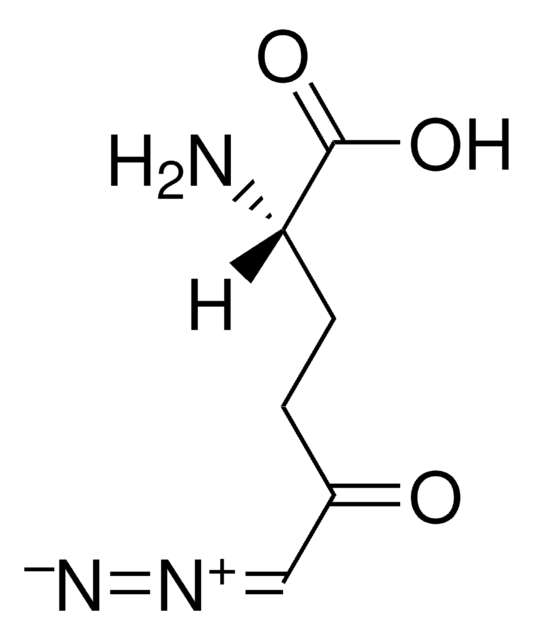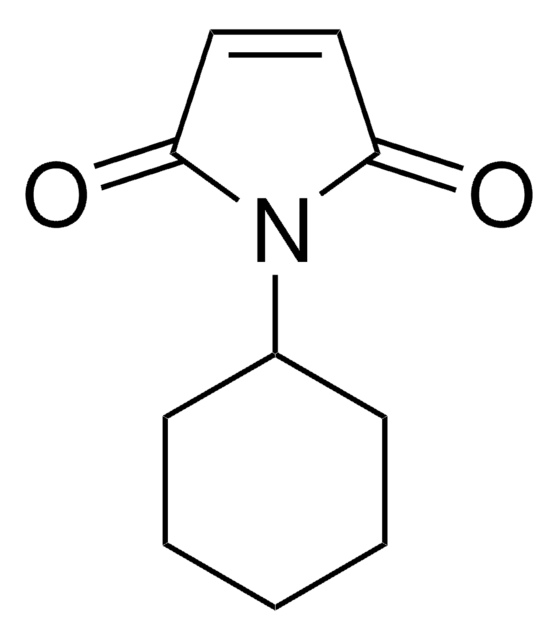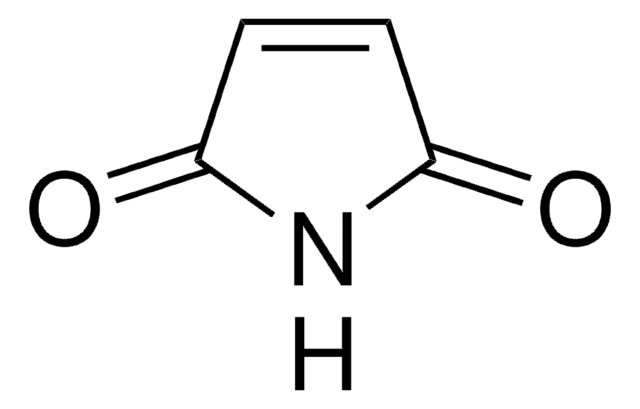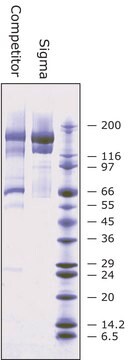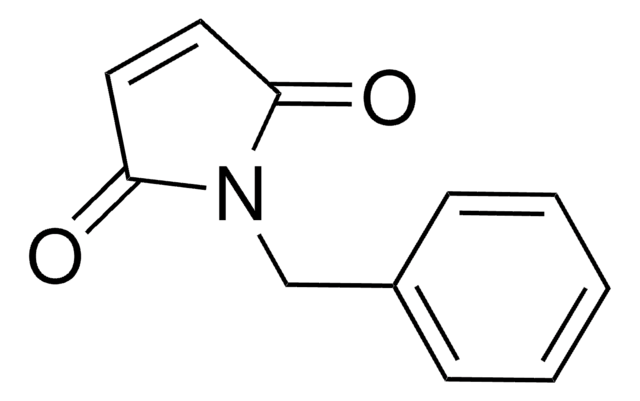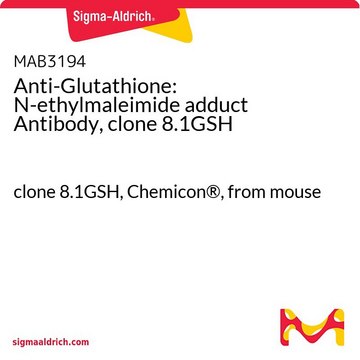E3876
N-Ethylmaleimide
crystalline, ≥98% (HPLC)
Sinónimos:
NEM
About This Item
Productos recomendados
origen biológico
synthetic (organic)
Nivel de calidad
Análisis
≥98% (HPLC)
formulario
crystalline
condiciones de almacenamiento
(Tightly closed. Dry. Keep in a well-ventilated place. )
técnicas
activity assay: suitable
co-immunoprecipitation (co-IP): suitable
immunoblotting: suitable
color
white to faint yellow
bp
210 °C (lit.)
mp
43-46 °C (lit.)
solubilidad
ethanol: 50 mg/mL, clear to slightly hazy, colorless to faint yellow or tan
idoneidad
suitable for Western blot
aplicaciones
life science and biopharma
temp. de almacenamiento
2-8°C
cadena SMILES
CCN1C(=O)C=CC1=O
InChI
1S/C6H7NO2/c1-2-7-5(8)3-4-6(7)9/h3-4H,2H2,1H3
Clave InChI
HDFGOPSGAURCEO-UHFFFAOYSA-N
Información sobre el gen
human ... KCNQ2(3785) , KCNQ4(9132) , KCNQ5(56479) , SLC6A3(6531) , SLC6A4(6532)
¿Está buscando productos similares? Visita Guía de comparación de productos
Aplicación
Acciones bioquímicas o fisiológicas
Nota de preparación
Otras notas
producto comparable
Palabra de señalización
Danger
Frases de peligro
Consejos de prudencia
Clasificaciones de peligro
Acute Tox. 2 Oral - Acute Tox. 3 Dermal - Eye Dam. 1 - Skin Corr. 1B - Skin Sens. 1
Código de clase de almacenamiento
6.1A - Combustible acute toxic Cat. 1 and 2 / very toxic hazardous materials
Clase de riesgo para el agua (WGK)
WGK 3
Punto de inflamabilidad (°F)
163.2 °F - closed cup
Punto de inflamabilidad (°C)
72.9 °C - closed cup
Equipo de protección personal
Eyeshields, Faceshields, Gloves, type P3 (EN 143) respirator cartridges
Elija entre una de las versiones más recientes:
¿Ya tiene este producto?
Encuentre la documentación para los productos que ha comprado recientemente en la Biblioteca de documentos.
Los clientes también vieron
Nuestro equipo de científicos tiene experiencia en todas las áreas de investigación: Ciencias de la vida, Ciencia de los materiales, Síntesis química, Cromatografía, Analítica y muchas otras.
Póngase en contacto con el Servicio técnico
